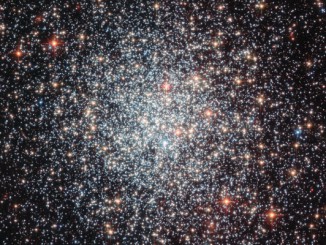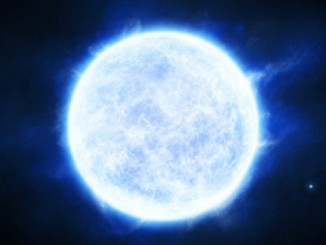
VLC sees star birth in the Large Magellanic Cloud
In this image from ESO’s Very Large Telescope (VLT), light from blazing blue stars energises the gas left over from the stars’ recent formation. The result is a strikingly colourful emission nebula, called LHA 120-N55, in which the stars are adorned with a mantle of glowing gas. LHA 120-N55 lies within the Large Magellanic Cloud, a satellite galaxy of the Milky Way.





